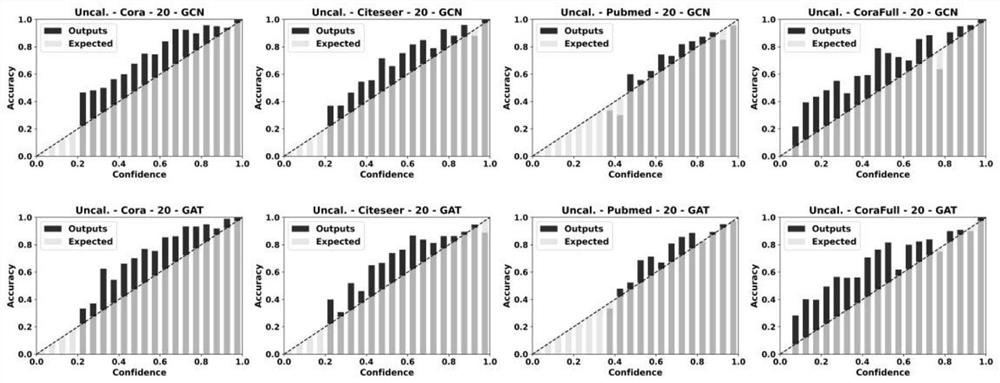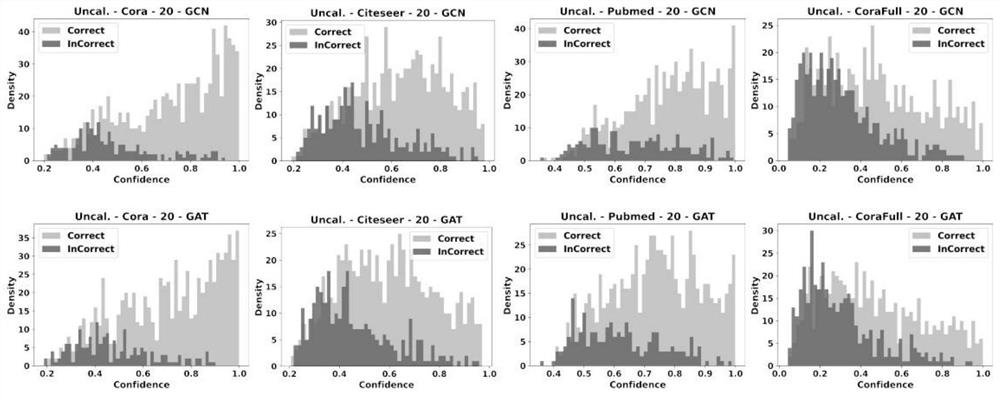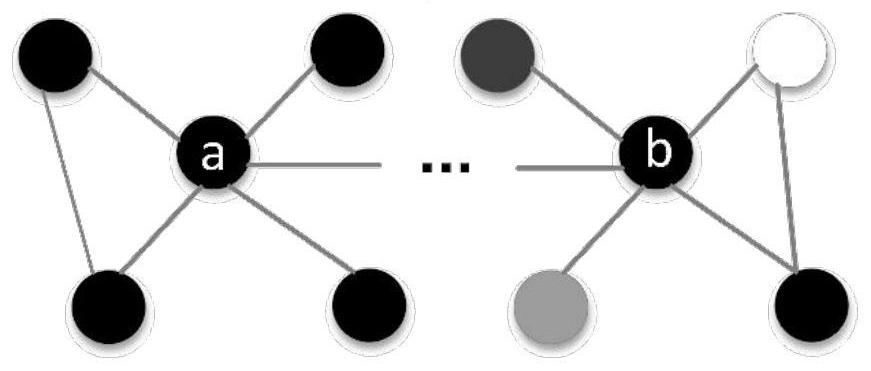topological perception post-processing confidence coefficient correction method applied to GNN
A correction method and confidence level technology, applied in neural learning methods, biological neural network models, design optimization/simulation, etc., can solve problems such as overconfidence in prediction, low prediction accuracy of the model, and inability to be added to the training set, etc., to improve The effect of confidence
- Summary
- Abstract
- Description
- Claims
- Application Information
AI Technical Summary
Problems solved by technology
Method used
Image
Examples
Embodiment Construction
[0037] In this invention, we focus on correcting the undirected property graph G=(V,E) with the adjacency matrix A∈R N*N And node feature matrix X=[x 1 ,...,x N ]. V is a node set, E∈V*V is an edge set composed of edges between nodes, and N=|V| is the number of nodes. We give the definition of GNN being perfectly corrected:
[0038] Definition 1: Given a random variable and a GNN model f θ , where θ is a learnable parameter, and for node i, define its label as y i ∈ Y, the output of the GNN is z i = f θ (x i , A)=(z i,1 ,...,z i,K ), and define with are the prediction of the model and the corresponding confidence, then we say that when f θ It is perfectly corrected when it satisfies the following definition:
[0039]
[0040] According to Definition 1, only when the confidence GNNs are perfectly calibrated when exactly equal to the true probability of each node getting a correct prediction.
[0041] Next, we take two representative GNNs (GCN and GAT) as ...
PUM
 Login to View More
Login to View More Abstract
Description
Claims
Application Information
 Login to View More
Login to View More - R&D Engineer
- R&D Manager
- IP Professional
- Industry Leading Data Capabilities
- Powerful AI technology
- Patent DNA Extraction
Browse by: Latest US Patents, China's latest patents, Technical Efficacy Thesaurus, Application Domain, Technology Topic, Popular Technical Reports.
© 2024 PatSnap. All rights reserved.Legal|Privacy policy|Modern Slavery Act Transparency Statement|Sitemap|About US| Contact US: help@patsnap.com










